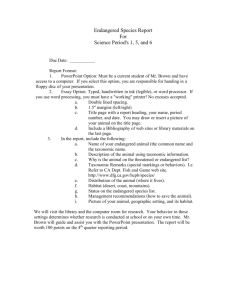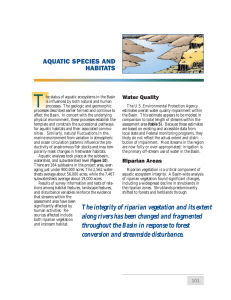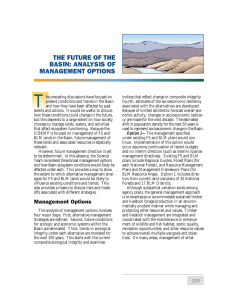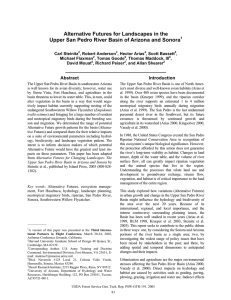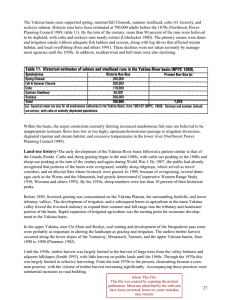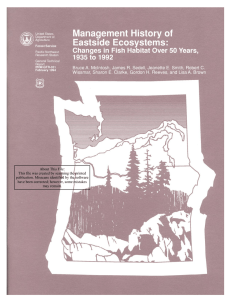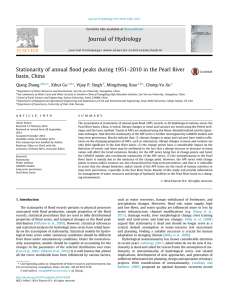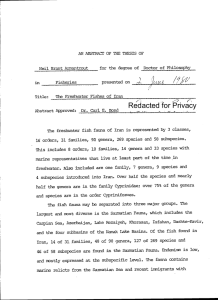13750_2015_47_MOESM3_ESM - Springer Static Content Server
advertisement
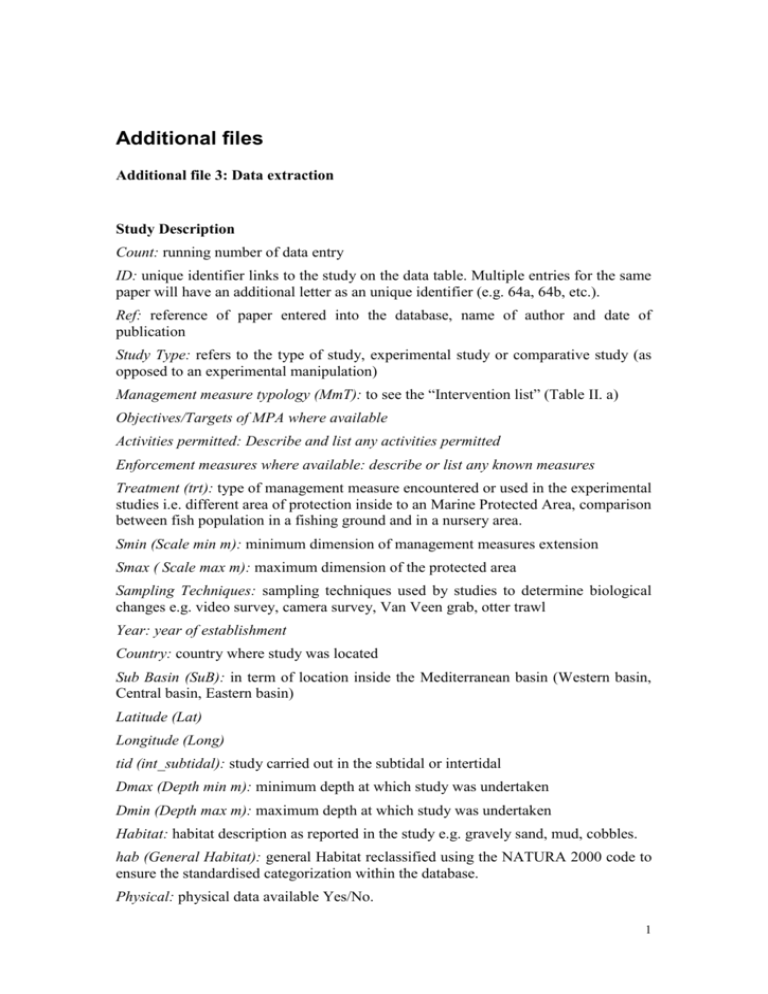
Additional files Additional file 3: Data extraction Study Description Count: running number of data entry ID: unique identifier links to the study on the data table. Multiple entries for the same paper will have an additional letter as an unique identifier (e.g. 64a, 64b, etc.). Ref: reference of paper entered into the database, name of author and date of publication Study Type: refers to the type of study, experimental study or comparative study (as opposed to an experimental manipulation) Management measure typology (MmT): to see the “Intervention list” (Table II. a) Objectives/Targets of MPA where available Activities permitted: Describe and list any activities permitted Enforcement measures where available: describe or list any known measures Treatment (trt): type of management measure encountered or used in the experimental studies i.e. different area of protection inside to an Marine Protected Area, comparison between fish population in a fishing ground and in a nursery area. Smin (Scale min m): minimum dimension of management measures extension Smax ( Scale max m): maximum dimension of the protected area Sampling Techniques: sampling techniques used by studies to determine biological changes e.g. video survey, camera survey, Van Veen grab, otter trawl Year: year of establishment Country: country where study was located Sub Basin (SuB): in term of location inside the Mediterranean basin (Western basin, Central basin, Eastern basin) Latitude (Lat) Longitude (Long) tid (int_subtidal): study carried out in the subtidal or intertidal Dmax (Depth min m): minimum depth at which study was undertaken Dmin (Depth max m): maximum depth at which study was undertaken Habitat: habitat description as reported in the study e.g. gravely sand, mud, cobbles. hab (General Habitat): general Habitat reclassified using the NATURA 2000 code to ensure the standardised categorization within the database. Physical: physical data available Yes/No. 1 Fauna: fauna analysed e.g. vertebrate, invertebrate, fish, algae. Outcomes: species (Sp) – population level (Pop) – diversity indices (Di) plot (No of Replicates): replicate sites or plots sampled by study. rep (No of Samples per Replicate): number of samples collected within a replicate site or plot. Trec (Time Recovery): maximum number of recovery days monitored by the study Spreadsheet Data: raw data available in form of spreadsheets yes/no Notes: notes to point out specific features of a study which might be helpful for future analysis or for clarification of methodology Study Data Count: running number of data entry ID: unique identifier links to the study on the data table. tresp (Response Type): response data type e.g. fauna; physical parameters, indices resp (Response): parameter whose response to trawling etc has been measured, e.g. a species, taxon, order, diversity index, sediment characteristic. Phylum: taxonomic classification Class: taxonomic classification Order: taxonomic classification Biomass: type of raw data - biomass data yes/no Time days rep: reported time in days sampled Raw units: units as reported by the study Units in m2: units standardized to m² Background management control: background management of control site if known when used in comparative studies. Raw control: raw data for control plots as extracted from the study varC (Variance control): variance of raw control data sampC (Number of samples in control): number of samples taken at control site/plot Background treatment: background management of treatment site Raw treatment: raw data treatment as extracted from the study varT (Variance treatment): variance of raw treatment sampT (Number of samples in treatment): number of samples taken at treatment site/plot Pdiff (% diff): calculated percentage difference between control and treatment 2



